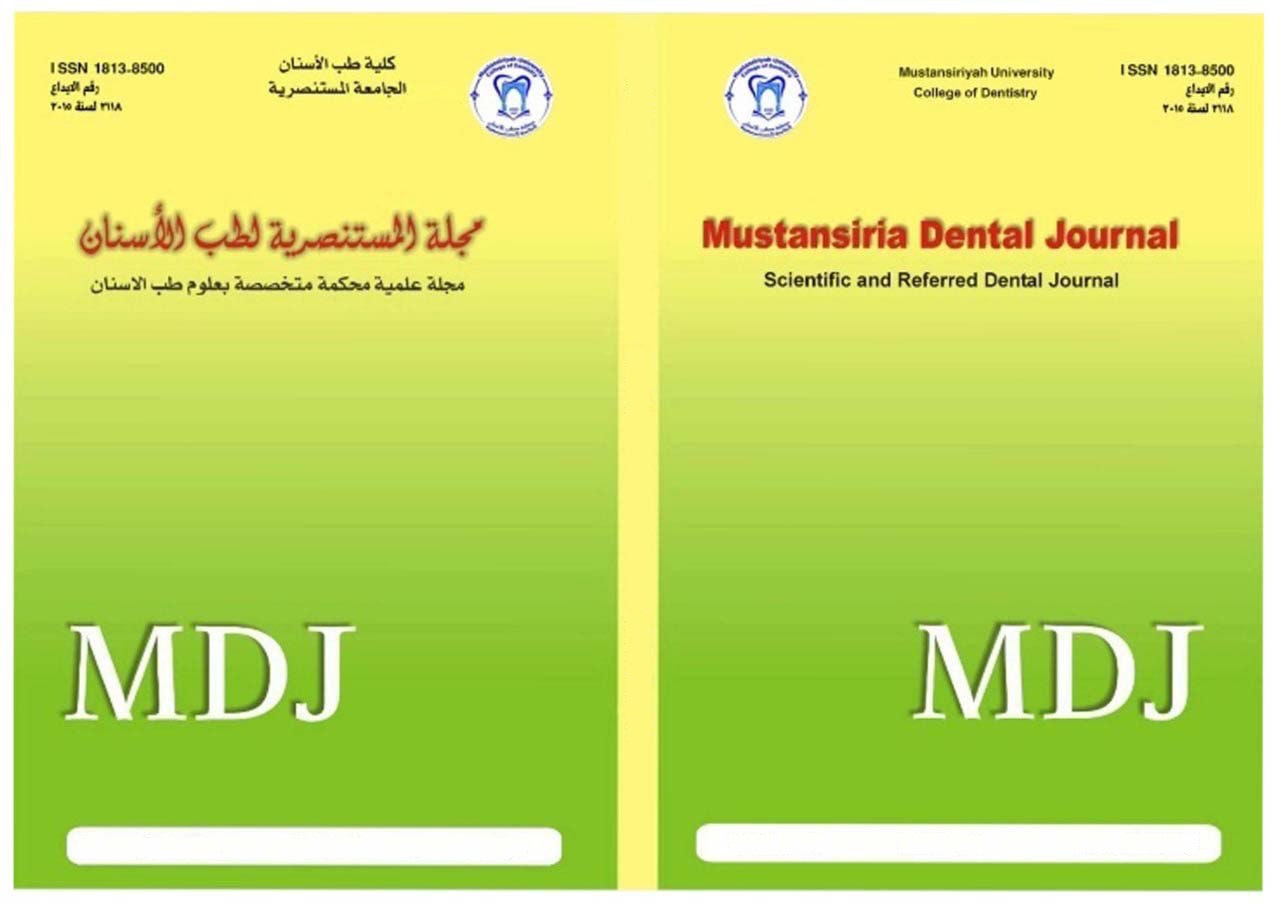Abstract
The purpose of this study was to evaluate the amount of apically extruded debris
using 5 types of nickel–titanium endodontic instruments (Hand ProTaper, Rotary
ProTaper, Rotary Mtwo, RECIPROC and WaveOne). Seventy-five freshly extracted
mandibular premolar teeth were used in this study. All teeth were shortened to a
length of 14mm. The specimens were randomly divided into five groups (each group
containing 15 samples) according to the type of instrumentation systems used. Group
I: instrumented by hand ProTaper system (Hand technique). Group II: instrumented by rotary ProTaper system. Group III: instrumented by rotary Mtwo system. Group 1V: instrumented by single file RECIPROC system. Group V: instrumented by single file WaveOne system. Debris extruded from the apical foramen was collected into pre-weighed glass vials. The difference between the weights of vial (pre-weight and post-weight) represented the weight of debris extruded from apical foramen during
canal preparation. The results showed that all groups induced extrusion of debris, Mtwo group (III) has statistically the lowest mean value of apically extruded debris in
comparing with all other groups, followed by rotary ProTaper (II), hand ProTaper (I), and WaveOne (V) groups respectively. While the RECIPROC group (IV) has statistically highest mean value.
using 5 types of nickel–titanium endodontic instruments (Hand ProTaper, Rotary
ProTaper, Rotary Mtwo, RECIPROC and WaveOne). Seventy-five freshly extracted
mandibular premolar teeth were used in this study. All teeth were shortened to a
length of 14mm. The specimens were randomly divided into five groups (each group
containing 15 samples) according to the type of instrumentation systems used. Group
I: instrumented by hand ProTaper system (Hand technique). Group II: instrumented by rotary ProTaper system. Group III: instrumented by rotary Mtwo system. Group 1V: instrumented by single file RECIPROC system. Group V: instrumented by single file WaveOne system. Debris extruded from the apical foramen was collected into pre-weighed glass vials. The difference between the weights of vial (pre-weight and post-weight) represented the weight of debris extruded from apical foramen during
canal preparation. The results showed that all groups induced extrusion of debris, Mtwo group (III) has statistically the lowest mean value of apically extruded debris in
comparing with all other groups, followed by rotary ProTaper (II), hand ProTaper (I), and WaveOne (V) groups respectively. While the RECIPROC group (IV) has statistically highest mean value.
Keywords
Apical extrusion
NiTi instruments.
Rotary systems
Single-file systems
